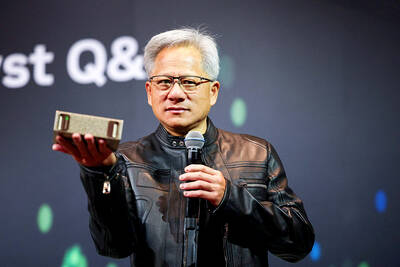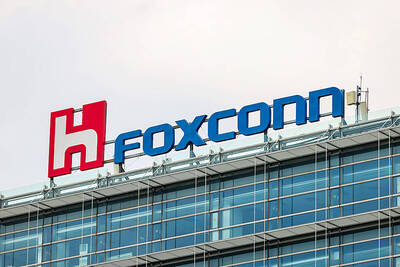Who would have predicted that being able to make a phone call with a cellphone would be a mere added bonus? Many cellphone users now use their phones to take pictures, to download images and music from the Internet, or to play games.
Given that the current crop of devices from the major manufacturers come equipped with color displays and integrated or plug-in cameras, it's no wonder that dialing up friends and family is an afterthought.
"We do still in fact make cellphones without color displays or MMS service," says Marco Kreye, product manager for Nokia.
Yet the Finnish company also sees picture-taking mobile phones as the prevailing trend of the moment.
In addition to devices with integrated cameras, the firm also offers a "fun camera" that can be hooked into six different phones.
Other devices, such as the Nokia 6220, can also record videos via their built-in camera.
The situation is similar at Sony Ericsson and Motorola: all models beyond the most basic class offer cameras and color displays.
"The design of the Z600 model is fully intended for this dual function," says Sony Ericsson's Myriam Hoffmann.
The back side of the device looks like a digital camera, and the changeable faceplates are designed to accommodate this.
Most cell phone makers offer high-end devices to accompany the basic and mid-line phones.
These usually offer significant extra functionality. US maker Motorola offers the MPX200, for example.
The flip-style phone is the first from a major manufacturer to come with Microsoft software pre-installed, says Rej Husetovic, a spokesman for the firm.
This software allows for easy use of programs such as Outlook, Media Player, and Internet Explorer.
The 6600 and 3660 models from Nokia allow for external memory cards to be inserted.
"These can store up to 1000 images," says product manager Kreye. Photos can also be edited, and videos recorded, edited, and combined with sound.
The N-Gage from Nokia is intended to speak to a younger audience. The device is first and foremost a gaming console, and Nokia has announced plans to bring 50 new games to market this year.
Yet the N-Gage is also equipped to make telephone calls, play games over the Internet, and hook up to other devices via the Bluetooth wireless standard.
Siemens has also put a high-end device on the market, the SX1, which combines a variety of talents. In addition to the built-in camera, video and music player, and gaming platform, the cellphone also offers organizer and address book programs intended to appeal to the business crowd.
In terms of development, the sky is the limit, the cellphone makers report. Motorola, for example, is planning to tout the "push-to-talk" function popular in the US but not elsewhere.
Pressing a special button puts the cellphone users into immediate contact with specified individuals or groups.
"This kind of new service is often initially mocked, but then ends up being very successful," says Motorola's Husetovic.
Nokia plans on bringing out the Nokia 7700 in the second quarter this year, a cell phone that is as much of a media terminal as it is a telephone.
"This will blend together cellular communication and the media branch," says product manager Kreye.
The 7700 will offer a particularly large touch-screen with around 65,000 colours, he says.
The device can be controlled through a stylus, making the model particularly well suited for dialing into the Internet, Kreye believes.
Streaming video and audio files from the Internet will then be accessible in real time.
Siemens spokeswoman Klein foresees such special services like video and audio streaming as soon making a breakthrough into the mass market.
She also feels that improvements of existing technology are more likely than major new technical developments.
"It will always be possible to cram more colors into the displays," says Klein. Sony's Hoffmann presumes that the pixel count for cellphone photos will be on the rise, leading to an improvement in quality.
From the manufacturer's point of view, one priority is development of larger storage capacity that can handle the requirements of these new applications, says Kreye.
"Open standards are important so that cellphones from different makers can perform these new services on different cell networks," Kreye says.
This means that the network operators will need to be creative to determine what will succeed photos, videos, and multimedia messages.
Motorola's Husetovic is sure of one thing: "The future will bring us services that we haven't even thought of yet."

SEEKING CLARITY: Washington should not adopt measures that create uncertainties for ‘existing semiconductor investments,’ TSMC said referring to its US$165 billion in the US Taiwan Semiconductor Manufacturing Co (TSMC, 台積電) told the US that any future tariffs on Taiwanese semiconductors could reduce demand for chips and derail its pledge to increase its investment in Arizona. “New import restrictions could jeopardize current US leadership in the competitive technology industry and create uncertainties for many committed semiconductor capital projects in the US, including TSMC Arizona’s significant investment plan in Phoenix,” the chipmaker wrote in a letter to the US Department of Commerce. TSMC issued the warning in response to a solicitation for comments by the department on a possible tariff on semiconductor imports by US President Donald Trump’s

‘FAILED EXPORT CONTROLS’: Jensen Huang said that Washington should maximize the speed of AI diffusion, because not doing so would give competitors an advantage Nvidia Corp cofounder and chief executive officer Jensen Huang (黃仁勳) yesterday criticized the US government’s restrictions on exports of artificial intelligence (AI) chips to China, saying that the policy was a failure and would only spur China to accelerate AI development. The export controls gave China the spirit, motivation and government support to accelerate AI development, Huang told reporters at the Computex trade show in Taipei. The competition in China is already intense, given its strong software capabilities, extensive technology ecosystems and work efficiency, he said. “All in all, the export controls were a failure. The facts would suggest it,” he said. “The US

The government has launched a three-pronged strategy to attract local and international talent, aiming to position Taiwan as a new global hub following Nvidia Corp’s announcement that it has chosen Taipei as the site of its Taiwan headquarters. Nvidia cofounder and CEO Jensen Huang (黃仁勳) on Monday last week announced during his keynote speech at the Computex trade show in Taipei that the Nvidia Constellation, the company’s planned Taiwan headquarters, would be located in the Beitou-Shilin Technology Park (北投士林科技園區) in Taipei. Huang’s decision to establish a base in Taiwan is “primarily due to Taiwan’s talent pool and its strength in the semiconductor

French President Emmanuel Macron has expressed gratitude to Hon Hai Precision Industry Co (鴻海精密) for its plan to invest approximately 250 million euros (US$278 million) in a joint venture in France focused on the semiconductor and space industries. On his official X account on Tuesday, Macron thanked Hon Hai, also known globally as Foxconn Technology Group (富士康科技集團), for its investment projects announced at Choose France, a flagship economic summit held on Monday to attract foreign investment. In the post, Macron included a GIF displaying the national flag of the Republic of China (Taiwan), as he did for other foreign investors, including China-based